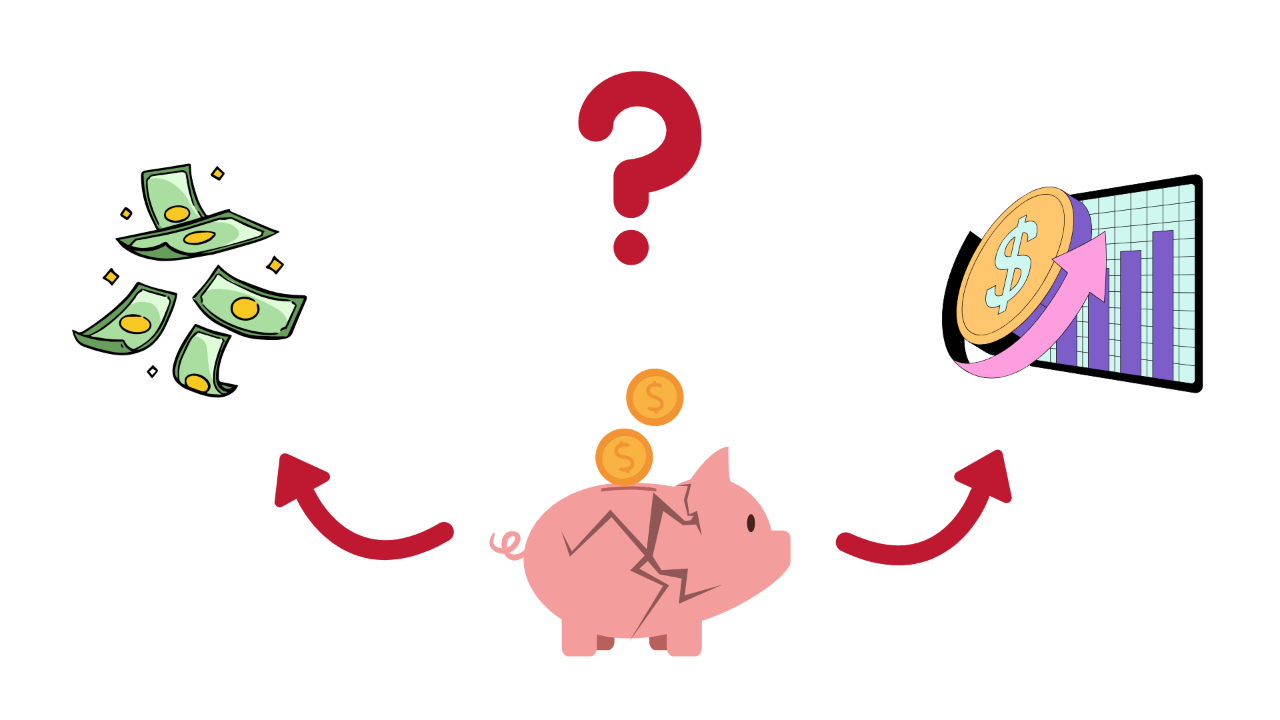
Zero Fee Brokers Are SCAMMING You
Feb 04, 2024Hello Stoic Investors,
Today, I want to talk about a huge problem: Zero-Fee Brokers.
We have more and more brokers that do not have commissions and it seems that you are not paying
anything with them.
And this has been pointed as a problem from bigger investors than me like Charlie Munger, the right-hand
man of Warren Buffett, who said that Robinhood and other brokers are being called out for dirty money.
What fees do you pay with your Broker?
Let’s first understand what fees you generally need to pay with your Broker.
A Broker is a business and somehow, they need to make money.
And so, every time anything is free you should be very skeptic, because there’s always some trick behind
the scenes, and it's important to understand how to recognize them.
First of all, the typical fees of a broker are three:
1. Fixed Fees:
This means you pay a fixed amount per month for the broker that you have.
2. Per-trade Fees:
With these fees you pay a percentage or fixed amount every time you buy or sell an asset.
It may look something like this: Every time you buy, you invest $100 into a stock, you pay maybe 0.5% of
the investment value or maybe a fixed $1.
3. Asset Fees:
You pay a percentage of your total investments value every year.
I suggest you to avoid this type of fee because it becomes very big the more money you have, and maybe
for even not doing anything.
So generally, I prefer something that is fixed because it's very transparent, or per-trade if I don't plan to
invest so often.
But asset fees is something that I want to avoid.
Understanding the trick behind Zero-fee Brokers
Now, if you aren’t paying any of those fees, you need to know that commission-free Brokers have a very
shady way of making money without you noticing, which is called order flow.
To understand what order flow is, we need to first understand the concept of bid-ask spread, which is much
easier to understand than you might think.
Bid-ask spread simply means the difference between the best offer to buy and the best offer to sell.
For example, let's say that the price of a stock is €100.
We have the sellers, Mario and Franco, that are selling it for €110 and €105.
On the other hand, we have the buyers, Paolo and Luigi, which are offering €95 and €90 to buy that same
piece of stock.
In the moment in which two people have the same agreement, like the seller wants to sell for €100 and the
buyer wants to buy for €100, exchange happens instantaneously.
But as long as there's a difference between the best buying price and the lowest selling price, you will have
a spread, that’s a difference.
And therefore, in this case, the spread is between €95 and €105, which means €10 or 10%.
And so, of course, the idea is that this spread, with more buyers and sellers available, will become smaller,
right? Because there is more competition on both sides.
As a matter of fact, if you have, on one scenario, 1,000 buyers and 1,000 sellers for a stock, it's unlikely that
they want exactly the same price to buy and sell, it's more likely that they will outcompete each other, and
the spread will become thinner.
This is the bid-ask spread. It's called like this because:
When you're offering to buy something, you are bidding, you are making a bid.
When you're asking to sell something, you are asking.
Order flow: the new scam
Now, let’s go back to the concept of order flow.
It means that the payment per order flow is a compensation that broker-dealers receive in exchange for
placing trades with market makers and electronic communication networks.
In simple words, if you are Paolo, offering €95 for the stock, and you see that the latest price of the stock is
€100, with the order flow mechanism, the actual price will be slightly higher.
This means that the people that are selling to you, which are usually the big banks, will raise the price on
purpose because they have a monopoly.
They can control the prices of the stock that you are getting.
It's not something that you will notice that much.
We're talking about very small things, but it covers what you would be paying with a fixed fee.
So what you're not paying as a fixed fee or fee per trade, you are paying it without knowing it, which is even
much worse, by paying more for the same stock.
So, if you buy a share of Apple without order flow for €100, with order flow you'll pay €101 for the same
share.
In both ways you still get a share of Apple, but if you use a broker that doesn't implement order flow, you
spent just €100, while with the order flow active you will spend €101.
This means that even if your broker is technically commission-free, given that you paid more for the same
thing, at the end of the day, you are still paying.
And so, going back to the type of fees that we were talking about, Fixed Fees, Per-trade Fees, Asset Fees,
all of these are fees that you can understand, and which are easier, in my opinion, to have when you have a
commission-free broker.
Most of the times, they use this order flow, which means that the order is more expensive.
How to avoid paying for order flow
So how do we avoid this?
First, always ask yourself "If I'm not paying for this service apparently, how can this company make
money?".
This is true for brokers that are commission-free, but it's true for many other things.
So every time something is free, ask yourself why.
Second, just search on Google the broker that you have and see if they do payment per order flow
because luckily, they need to tell us by law.
So you can understand this just by checking on Google.
Remember, always approach 'free' offerings with skepticism, as there's often a cost hidden beneath the
surface.
So, note down these key points and start investing today:
1. The typical fees for a Broker are: Fixed Fees, Per-trade Fees and Asset Fees
2. Commission-free brokers earn through hidden mechanisms like order flow, inflating stock prices.
3. Brokers use the bid-ask spread to add hidden fees to trades.





